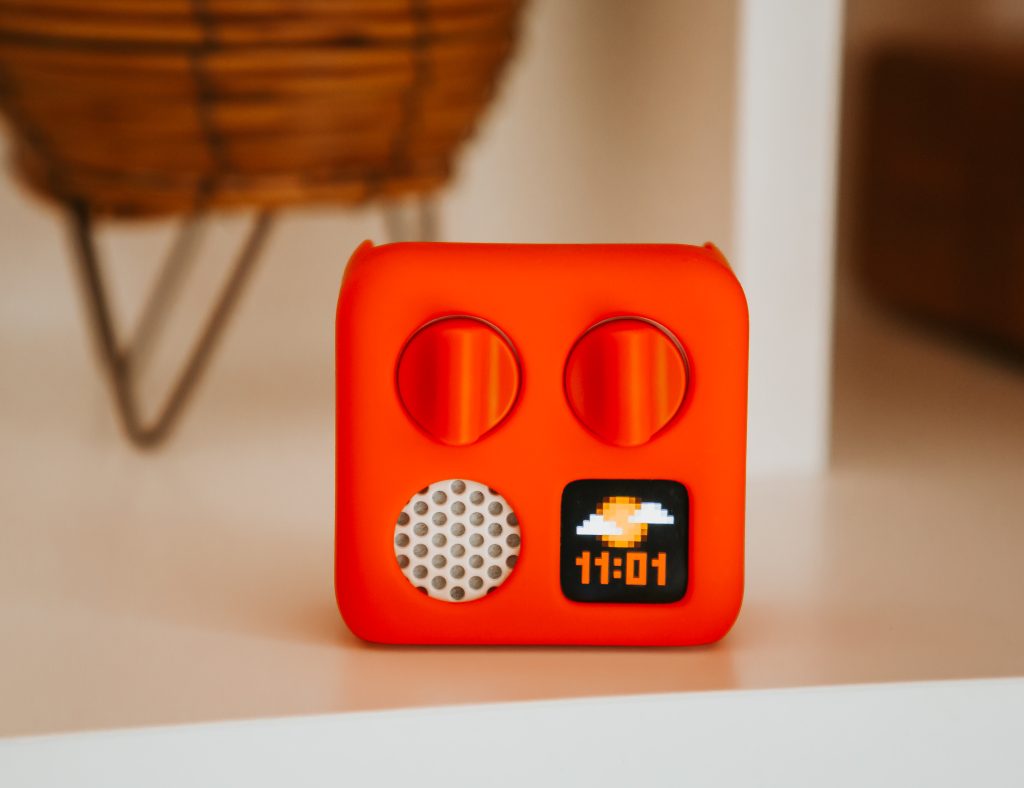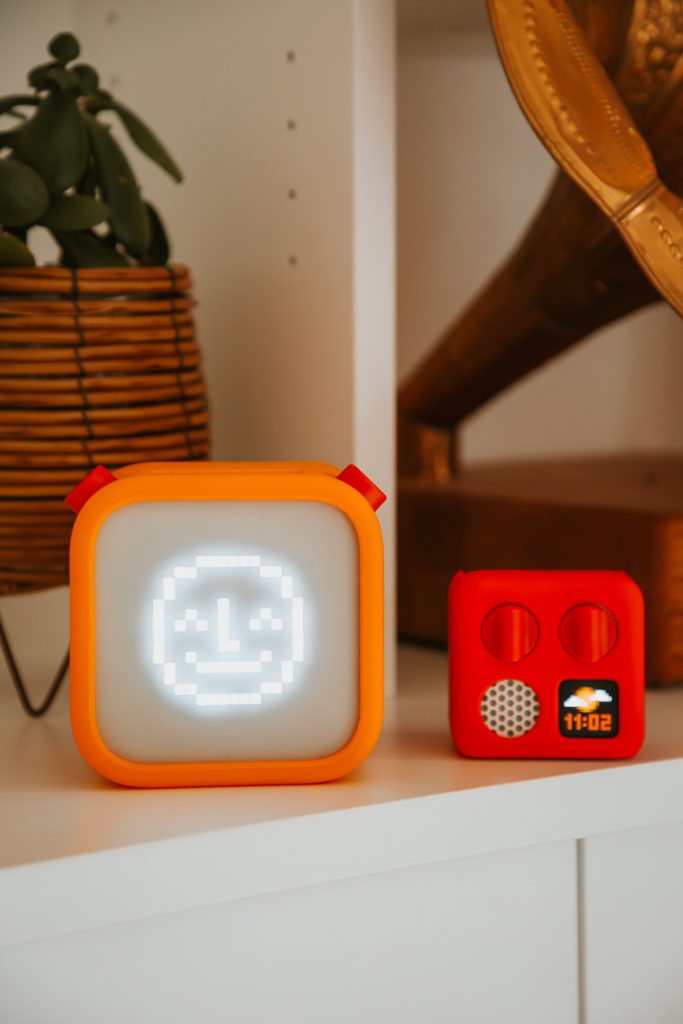This review of Yoto vs Yoto Mini contains affiliate links.
In an effort to steer our son away from the endless loop of Peppa Pig, I started searching for screen-free alternatives that could still keep him happily entertained.
My sister already owned a Toniebox, but I wanted something a bit more portable – and preferably without small figurines that would inevitably disappear under the sofa.
The first recommendation that popped up was the Yoto Player – a portable audio player for kids that gives little ones control over what they listen to, without relying on screens.
The Story Behind the Yoto Player
The Yoto Player was created by two dads, Ben and Filip, who were searching for a healthier, screen-free entertainment option for their kids (and, presumably, a break from Baby Alexander’s endless whinging).
After a successful Kickstarter campaign and months of perfecting the prototype, the original Yoto Player launched in 2018 – quickly becoming a hit with parents and children alike.
It wasn’t long before it gained major recognition, even being named one of TIME Magazine’s Best Inventions of 2020.
Enter the Yoto Mini
While the Yoto Player continued to impress families worldwide (it’s now on its third generation), Ben and Filip weren’t done innovating.
In 2021, the Yoto Mini was introduced – a compact, travel-friendly version of the original Yoto Player. It offers many of the same great features, like audiobooks, music, podcasts and educational content, all in a smaller, more portable design.
Which is Better: Yoto Player or Yoto Mini?
This expanded range is great news for parents, but it does raise an important question: which is better, the Yoto or the Yoto Mini?
Having now used both models (my sister owns the Yoto Mini, and I use the 3rd Generation Yoto Player), I’ve put together a full comparison of Yoto vs Yoto Mini, including the key differences, and pros and cons of each.
My verdict? The 3rd Generation Yoto Player is best, but it really does depend on why you’re purchasing this brilliant screen alternative.
Yoto Player vs Yoto Mini — Key Differences
| Feature | Yoto Player (3rd Gen) | Yoto Mini |
|---|---|---|
| Size / Design | Larger cube shape (approx. 11×11×10.5 cm) — designed for home use. | Smaller palm‑sized (approx. 7×7×4 cm) — built for portability. |
| Sound Quality | Stereo sound with two speakers (“acoustically‑engineered”). | Mono speaker design, yet sound quality is strong for its size. |
| Battery Life & Charging | Around 24 hours battery life; supports optional wireless charging dock (sold separately). | Around 20 hours battery life; charges via USB‑C only (no wireless dock option). |
| Display & Controls | Bigger pixelated display showing story art, time, weather; chunky buttons. | Smaller display area; same features but smaller controls which may be fiddlier for toddlers. |
| Additional Features | Includes night‑light, room thermometer, OK‑to‑wake light. | Lacks night‑light and room thermometer, but retains OK‑to‑wake light. |
| Portability | Portable around the home and travel‑friendly, but larger to carry. | Excellent portability — ideal for car journeys and travel. |
| Price (UK) | £99.99 approximately | £59.99 approximately |
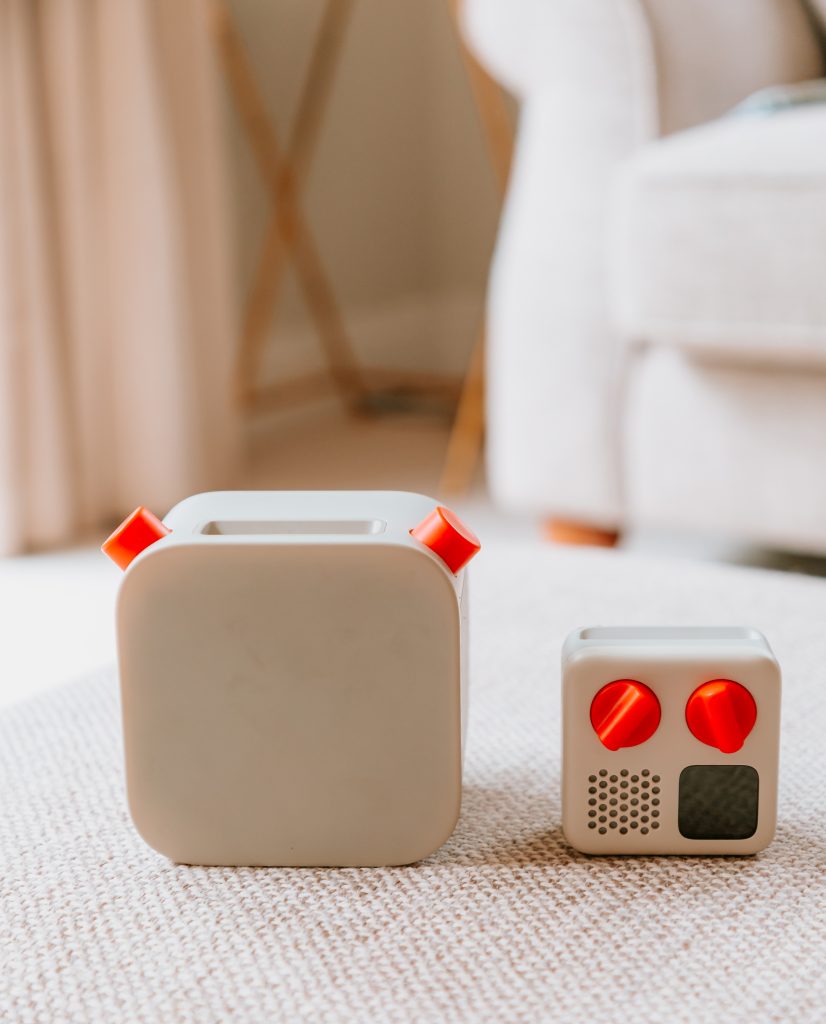
Yoto Mini Recall: What Parents Need to Know About the New 2024 Model
Before we start this comparison, I just wanted to flag the Yoto Mini controversy in 2024.
In late 2024, Yoto announced a recall of its earlier Yoto Mini players (sold between 2021 and 2023) due to a potential battery overheating issue that posed a fire and burn hazard.
Thankfully, the company acted quickly, first offering a ‘Smart Cable’ fix before later expanding the solution to a full Battery Replacement Kit. Parents who already own one of these earlier Minis were (and still are) encouraged to check their device’s serial number on Yoto’s official recall page to see if it’s affected.
If you’re wondering if the Yoto Mini is safe now – the good news is that the new 2024 Yoto Mini edition is completely safe and not part of the recall. It features an updated battery design that eliminates the issue altogether.
If you’re purchasing a Yoto Mini now, you can knowing you’re getting the latest version. For those still concerned, the larger Yoto Player (3rd Generation) remains completely unaffected by the recall and continues to be a reliable, screen-free audio player for kids (phew).
Differences Between the Yoto vs Yoto Mini
There are two versions of the Yoto audio player: the original Yoto Player and the Yoto Mini Player.
While I have the 3rd generation Yoto Player, my sister (and her daughter) have the Yoto Mini, also known as the Yoto Mini Player. We’ve therefore had a great opportunity to compare the two models side by side, to see how they work in different settings.
Firstly, let me stress that while there are some differences between the two products, these are fairly small and nuanced.
On the whole, what you get with the original Yoto Player is what you’ll also receive with the Yoto Mini. Both mini players and the original Yoto Player are compatible with the same cards, making it easy to share content between devices.
However, there are some variations – and dependent on what you’re looking for from your audio speaker – these differences may sway your decision.
So, let’s begin. What are the main differences between the Yoto and the Yoto mini? Read on to find out more.
1. Size and Sound Quality
When it comes to size and sound quality, there are a few differences between the Yoto Player vs Yoto Mini.
The 3rd Generation Yoto Player is geared towards use around the house. As such, it‘s bigger – at 11 x 11 x 10.5.
Thanks to its size, it also has what Yoto refer to as ‘acoustically-engineered’ stereo sound – meaning that it has two fairly sized speakers. The larger Yoto Player also offers extra features, such as a night light and improved sound quality, compared to the Mini.
However, and although it‘s the ‘larger’ of the two products, it‘s far from big. In fact, if you choose to get a jacket for your player, it‘s still incredibly portable and easy to lob in the car, if need be.
On the other hand, the Yoto Mini is predictably smaller: 7 x 7 x 4 (it fits into the palm of your hand). Its compact design is perfect for little hands, making it easy for young children to carry and use. Due to its size, the sound is mono, via just the one speaker.
The Yoto Mini is therefore designed for use on the go and ideally with headphones. However, having listened to the Yoto Mini without headphones, I do think the sound is just as good as the Yoto Player, if not better.
A key feature of the Yoto Mini is also its card slot, which allows kids to easily insert content cards to access stories and music.
Both devices feature two knobs for simple, child-friendly control of volume and track skipping. The Yoto Mini is (unsurprisingly) known for its mini features, such as a small display, single speaker and basic controls, making it especially suitable for portability and ease of use.
2. Battery Life
Once charged, the battery life of the Yoto Player (3rd generation) is 24 hours, whilst the Yoto Mini is 20 hours.
Charging the Yoto Player is also a little bit more convenient than the Mini. It can be used alongside a wireless charging dock – something that the Yoto Mini doesn’t have. Instead, you‘’ll need to charge the Yoto Mini via a USB-C charging cable, which is included in the box (you can also use this USB-C charging cable to charge the original Yoto Player, too).
However, it’s important to note that the wireless charging dock is an extra cost and doesn’t come free with the Yoto Player. You‘’ll need to pay for it separately (£30) – although there’s regularly 20% off (and therefore £19.99).
Charging mechanics aside, the battery life of both players is pretty fantastic and the difference in battery life is negligible.
3. Display
As the Yoto is intended to be an alternative to screens, both players have been deliberately designed to have fairly basic displays (something that initially enraged my son).
The Yoto Player has a bigger display, featuring an intentionally pixelated display. However, although pixelated, it’s still bright, fun and engaging.
This display will change regularly, taking the artwork from whatever story you happen to be listening to, and can also show the time and weather (the display will automatically turn itself off if it’s not on charge). The display updates based on the inserted card, so each time you insert a different Yoto card, the display reflects the new content.
You can also make some really fun artwork for your own customised cards, by choosing from different icons inside the Yoto app. Yoto cards allow for a wide range of stories, music and educational content, giving you lots of options to personalise your listening experience.
By contrast, the display on the Yoto Mini is much reduced – a small square at the bottom of the player. It shows all the same artwork and features as the 3rd Generation Yoto Player, but for obvious reasons, is simply smaller.
Given that this display is meant to be pared back anyway, I don‘t think this design difference really matters. The content your kids are meant to engage with is the audio, not any visual features.
When it comes to dials on the Yoto vs the Yoto Mini, both have two dials – although the buttons on the Yoto Mini are smaller and so possibly more fiddly for younger kids to use.
4. Features
When it comes to the differences between the Yoto Player and the Yoto Mini, there are surprisingly few. In fact, any discrepancies largely come down to the size of each player.
Both devices are designed as screen free audio players, using physical cards to play stories and music without a traditional screen, making them ideal for minimising screen time. On this objective, both definitely deliver.
However, it’s important to note that Yoto Mini has lost some of the functions and features of the 3rd Generation Yoto Player.
Night Light
Firstly, the larger Yoto Player has a night light, which the Yoto Mini lacks. Personally, I think the night light is a real plus of the Yoto Player, and it’s really handy to use alongside the white noise when my son goes to bed (and when we’re travelling).
To turn the nightlight on, turn the Yoto over so the display is face down – and you’ll see a light come on. This is automatically set to white, but you can control the colour and intensity via the app; something we think is brilliant.
The nightlight function also offers customisable colour options and can be used as a sleep training clock, changing colors at specific times to help guide your child’s bedtime and wake-up routine.
Without this night light, the Yoto Mini might perhaps have less of a role come bedtime.
Room Thermometer
Likewise, the Yoto Mini doesn’t have the room thermometer that the Yoto Player has. Again, we use this regularly as part of our bedtime routine (to ensure our son’s room isn’t too hot) and I think we’d miss it if we had the Yoto Mini.
These features make the Yoto Player especially ideal for a child’s room, providing both comfort and convenience tailored for a child’s environment.
OK-to-Wake Light
Thankfully, the Yoto Mini does benefit from the Yoto Player’s fantastic ‘OK-to-wake’ light, which is a godsend when sleep training. In short, you can set a light to come on your Yoto, which lets your little one know it’s OK to get up (preferably after 6am).
We have chosen a cosy red for bedtime and a green light to come on when it’s OK for our son to get up (this can all be set up in the app, in the parental controls section). The display also adjusts, with it showing an image of the sun in the morning, and the moon at night.
5. Portability
The Yoto Mini was designed with portability in mind, so that parents and kids can throw it in a bag and travel with it. It’s small enough to sit in the palm of your hand or your lap, which also makes it perfect when travelling by car or airplane.
The Yoto Mini is especially ideal for car rides and road trips, providing on-the-go entertainment for kids.
As such, it really is fantastically portable. It‘s lightweight, tiny and has a mini jacket – a protective cover with a handle for easy transport. You can wrap the handle around your hand and just head off. Yoto Minis are therefore especially suited for families on the go, thanks to their compact size and practical design.
By comparison, the 3rd Generation Yoto Player is bigger and a slightly awkward cube shape. It therefore takes up quite a lot of room in your bag and isn’t necessarily something you’ll want to carry around with you (a small kid would tire of carrying it around very quickly).
However, and on the flip side, it’s easy enough to move quickly and effortlessly around your home, and is far from heavy.
6. Listening Experience
When it comes to comparing the Yoto Player vs Yoto Mini, one thing I assumed was that the Yoto Player would offer a far superior listening experience. The Yoto Player plays a variety of audio content, including audiobooks, music and podcasts, providing a rich and engaging experience for children.
Given that the Yoto Player has stereo sound and two speakers, whereas the Yoto Mini has the single speaker, I was pretty adamant that this 3rd generation speaker would outstrip the Mini audio wise.
However, and surprisingly, this wasn’t the case at all.
Firstly, both players can be used alongside headphones, which immediately alters the listening experience anyway.
You have the option to use wired headphones via the headphone jack, or wireless headphones for added convenience during travel or on the go. With headphones on, both players offer a crystal-clear and intimate listening experience.
When it comes to content, you can access a wide range of radio stations, including Yoto Radio, as well as audio books and free podcasts through the Yoto app, giving your kid endless entertainment options.
However, even without the headphones, the Yoto Mini really packs a punch in terms of quality and volume. In fact, I’d venture that it’s possibly even better than the larger Yoto player – something I definitely hadn’t seen coming.
The device is great for quiet time and is suitable for older children and older kids who want independent listening.
(As a quick aside, an internet connection is required for the initial content download of any content, but once the content is loaded, the device can be used offline).
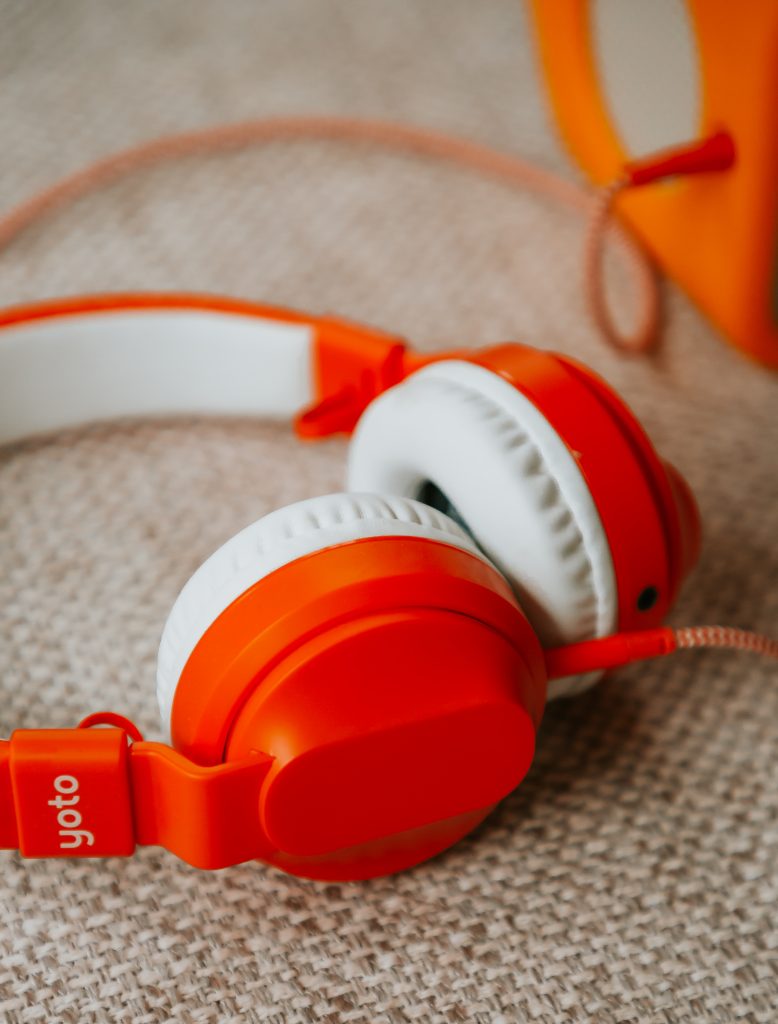 7. Price
7. Price
Perhaps the biggest difference between the Yoto Player vs Yoto Mini is the price.
The 3rd Generation Yoto Player currently costs £89.99, whereas the Yoto Mini is £59.99.
Importantly, both only come with the same initial accessories (a basic charger) and with one starter card, so you’ll need to pay extra for cards regardless. However, given that there’s so much free audio on the app, I’d probably hold off doing this until you’ve really explored all the content.
However, if you do want to get started with some cards immediately, then you can buy Yoto’s Starter Pack Bundle.This includes 6 cards, although these don’t include the big hitters (like Peppa Pig) and instead include cards like ‘My First 100 Words’, ‘Crackling Fire’ and ‘Songs from the Playground’.
If you need help with purchases or run into technical issues, Yoto’s customer service (from personal experience) is super responsive and helpful.
Alternatively, if you know what your kid likes, you can go straight for themed bundles, including The Grufflo and Friends bundle, Super Simple Songs Collection and Disney Songs.
You can filter the cards by age group, to make things a little easier.
There are also blank cards, also known as MYO cards, which let you record and customize your own audio content – perfect for cute personal stories or unique listening experiences.
8. Ok to Wake Feature and Routine
One of the standout features that both the Yoto Player and Yoto Mini offer is the ‘Ok to Wake’ function, which is a real game-changer for families with younger children.
This clever feature helps little ones understand when it’s time to get up and when it’s time to stay in bed, making mornings and bedtimes much smoother for everyone.
Setting up the Ok to Wake feature is simple through the Yoto app. Parents can easily customise wake-up and bedtime schedules to fit their child’s routine, all from their phone. When the set wake-up time arrives, the Yoto Player or Yoto Mini displays a bright sun icon, letting your child know it’s time to start the day.
At bedtime, a calming moon icon appears, signalling that it’s time to wind down and get ready for sleep. These visual cues are especially helpful for little kids who can’t yet tell time, making it easier for them to follow a consistent routine.
The Ok to Wake feature works hand-in-hand with other sleep-friendly functions on both the Yoto Player and Yoto Mini.
For example, the night light on the Yoto Player creates a gentle glow that’s perfect for bedtime, while the room thermometer helps you keep your child’s room at a comfortable temperature. Both devices can play soothing sleep sounds, like white noise or calming music, and there’s a huge range of sleep stories and meditations available through the Yoto app.
With so much free content to choose from, you can easily create a relaxing bedtime environment tailored to your child’s needs (something that we love).
Because both the Yoto Player and Yoto Mini are screen free audio players, they offer a healthy alternative to screens before bed. Instead of the stimulating effects of a tablet or TV, your child can listen to gentle audio, helping them relax and drift off to sleep.
Overall, the Ok to Wake feature, combined with the night light, room thermometer, and access to a wide variety of sleep sounds and stories, makes both the Yoto Player and Yoto Mini fantastic tools for building healthy sleep habits.
Using Your Yoto Players
Yoto Cards
Aimed at children between the ages of 3-12, the Yoto has a slot at the top that kids can insert ‘Yoto cards’ into. These cards have pre-recorded stories on them, alongside songs, educational material, podcasts, poetry and recordings geared towards movement and mindfulness.
The Yoto Player also comes with blank cards that you can record your own audio onto (you just record this via the Yoto app and then link it to a blank card – it’s very easy).
You can also download the content from the cards and app onto your player – storing them for when you’re on the go.
With big, bright chunky buttons, kids can then turn the dial to skip through stories and adjust the volume on their own.
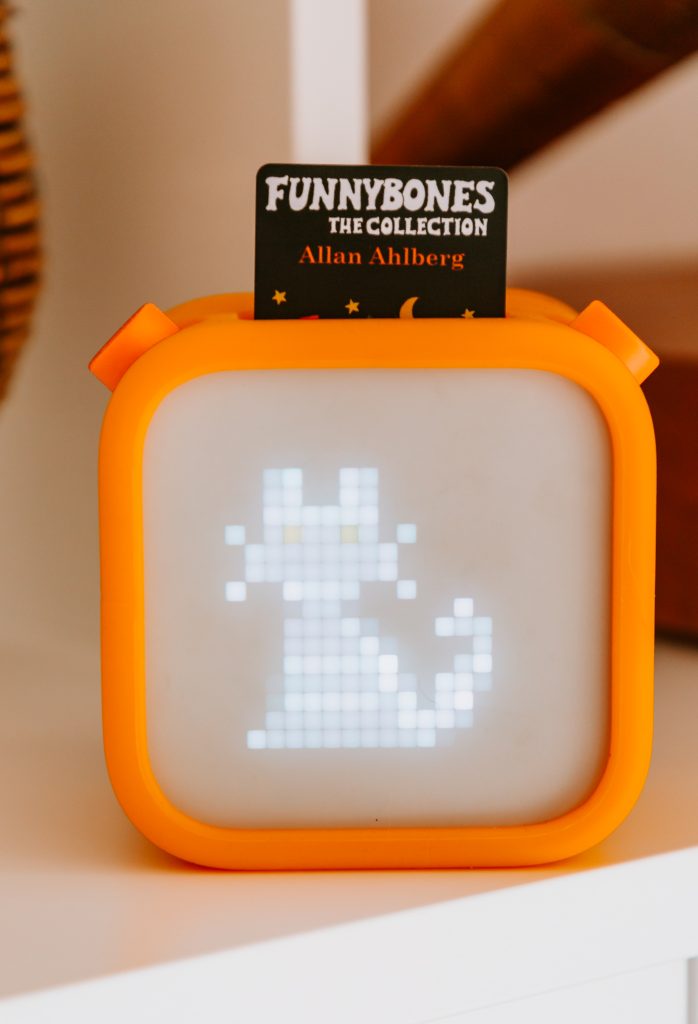
Free Audio on the Yoto App
Alongside the cards, you can also use the Yoto app with your player, in order to access some great (and entirely free) audio.
This includes radio stations such as BBC Radio, Fun Kids Radio and French, Spanish and German speaking stations. You’ll also find sleep sounds, sleep radio, white noise and, if you need it, an alarm (although why you’d need this with a young kid remains unclear).
On the app you’ll also find plenty of other great little hacks, including a toothbrush timer, tidy up timer, home work timer and soundscapes (fantastic for imaginative play). These soundscapes include Dinosaur Island and Construction Site, both of which my son absolutely loves and they definitely help to bring a whole new dynamic to our open-ended play.
The Yoto player can also be used as a bluetooth speaker, so you can play your own audio through it from your phone. Additionally, you can also buy headphones for the Yoto Players (big and small) – ideal for listening on the go.
As I mentioned above, both speakers can also be used offline and you can download the stories from your phone and cards onto each player. The 3rd generation Yoto Player can store 600 hours of stories, which (you’d hope) is plenty to keep your little one occupied.
Yoto Player Accessories
Lastly, both Yoto players come with a great array of accessories, including jacks (to make travelling with them easier), travel and card cases, headphones and cute little card pouches.
Overall, for what is in essence an audio speaker, the Yoto Player is an incredibly versatile, feature-packed and engaging piece of technology.
It really is brilliant.
In fact, I’d even go as far as to say it’s the best kid’s bluetooth speaker on the market and (I believe) much better than the TonieBox.
The Yoto Card Membership
The subscription service known as Yoto Club now offers three tiered plans to suit different family needs: Explorer, Collector, and Collector+.
The Explorer plan (from around £3.99/month in the UK) delivers unlimited digital access to over 140 Yoto Original titles – think stories, music and soundscapes – but doesn’t include credits for physical cards.
Next up is the Collector plan (about £7.99/month) which builds on Explorer by adding 1 Club Credit per month to spend on eligible physical cards (from a pool of 850+), free shipping on qualifying orders, and a 10% store-discount.
For those who are really invested in building a card-library, the Collector+ plan (around £12.99/month) offers all the same perks as Collector but with 2 Club Credits per month, making it a better fit if you expect to redeem multiple cards each month or take full advantage of the card collection side of Yoto.
You can switch plans or cancel anytime via your Yoto account. Annual subscriptions often save around 10–15% compared to monthly billing – a good choice if your kids are consistent Yoto listeners.
Is Yoto Club Worth It?
It depends on how much your family are going to be using the Yoto (and how quickly your kid gets bored of the cards they have).
I’d say if you want to ensure that the Yoto becomes an integral part of family life – then the Club probably is worth it.
Even the basic Explorer plan offers a huge library of stories, music and educational content, which can keep little listeners engaged without relying on screens.
If your child enjoys collecting physical Yoto Cards, or you want fresh content arriving each month, then the Collector or Collector+ plans offer excellent value – with Club Credits, discounts and free shipping.
I think that what makes Yoto Club especially appealing is the surprise factor – kids love discovering new stories they didn’t even know existed.
Whether you’re looking to supplement the Yoto Player or Mini, or just want a regular stream of high-quality, screen-free content, then the Yoto Club is a convenient, cost-effective way to keep little ones entertained, learning and imagining every month.
It also means you’ll be more committed to using it and all its features.
While purchasing cards one by one gives you complete control over what titles you end up with, it can quickly become expensive – especially if your child develops a favourite series or wants to explore multiple titles each month. If that’s the case, definitely sign up to the Club.
Which is Best: Yoto Player or Yoto Mini?
So, having trialled both the Yoto Player and Yoto Mini on two toddlers, which do I think is best suited to their needs?
It’s a difficult question to answer.
Firstly, before you choose your Yoto model, you should ask yourself what you’ll be using it for.
Do you want a versatile speaker that’ll fit seamlessly into the wider eco-system of your home? One that can play music and podcasts in the day, but help with sleep training and relaxation at night?
Or, are you looking for a device that you can throw in your bag and take with you in the car, or on holiday? A speaker that your child can easily hold onto?
Secondly, how much are you hoping to use your Yoto speaker? Is it just something you’ll bring out for car journeys or flights? Or are you intending it to become a regular and integral part of your child’s routine?
Initially, and as I mentioned at the start of this review, I was looking for a speaker that we could use on the go; a device that would tempt my son away from Bing’s endless whinging.
As such, I’d have therefore initially thought that the Yoto Mini was best for our family.
However, we eventually took the plunge with the 3rd Generation Yoto Player – and I’m so glad we did.
Yes, this player is bigger and packing it isn’t quite as effortless as it would be with the Yoto Mini, but this trade off is more than worth it. Our Yoto Player has become so much more than just a screen time alternative.
While I’ll concede that the Yoto Mini does have many of the same features, and could be used in an equally versatile way, I still can’t help but fall on the side of the larger Yoto Player – perhaps even solely for its night light function.
Ultimately, and while I think the Yoto Mini is fantastic for travel, having a Yoto Player that we can use not only for travelling, but also for nighttime and morning routines, has been a real game changer.
And it’s for this reason that I would say the Yoto Player is best.
